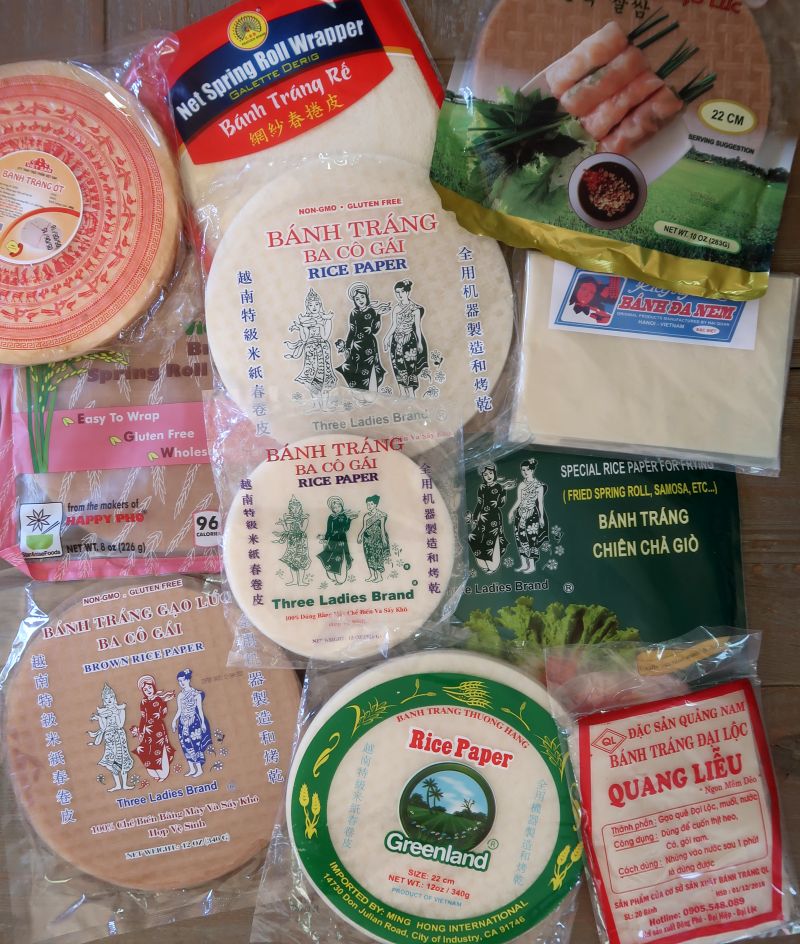
It's been about ten years since I last wrote a rice paper buying guide and lots has changed. For example, you're looking at my rice paper collection gathered from near and far, purchased from regular supermarkets, Asian markets, and vendors in Vietnam. My collection has definitely expanded since the 2009 post.
Rice paper, called bánh tráng (say "baan? trahng?") in Vietnamese, is an ingredient that can confuse. There are many brands as you can see in the photo and many kinds, too!
I hope this updated rice paper buying guide will help you further explore what's available! Let's start with some basics then we'll go into finding and selecting rice paper.
What is Rice Paper Made of?
Traditionally, rice paper was made from a batter of slightly fermented rice, water plus salt. The batter was steamed on top of fabric stretched over a pot of simmering water into thin rounds. The resulting rice sheets (similar to banh cuon) were dried on woven mats. The dried rice paper rounds could be stored and then rehydrated to soften and use. All of this explains the thinness of rice paper, the woven pattern on each one, and why you can eat rice paper as is!
Rice paper has changed a lot over the decades and the thick ones made of all rice were frankly, a pain in the butt to soften and use. Over time, manufacturers have added tapioca to the batter to make the result thinner, easier to soften, and more pliable. There's a balance though. Too much tapioca and the rice paper is super thin and plastic wrap like. There's a nice, slight tang from rice paper that's made with a decent amount of rice. The formulation is up to the maker and consumers choose what they want. All of this explains why tapioca is nowadays listed with rice in most regular kinds rice paper sold. (I avoid the all tapioca ones since they are too thin and tasteless.)
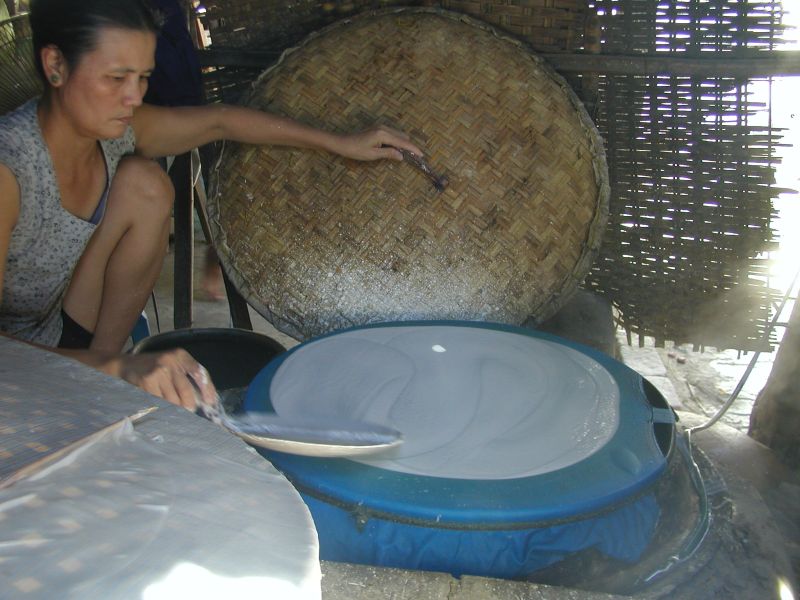
People who've gone to Vietnam and seen rice paper made by hand ask me about how to make it at home. Most Viet cooks DO NOT make bánh tráng. It's the purview of craftspeople and commercial manufacturers. We use rice paper too fast to casually whip some up at home. And, it's a labor intensive, special skill. See this post on an artisanal maker in Vietnam.
Rice Paper vs. Spring Roll Skin
Many rice paper packages are labeled as "spring roll skin" but know that that's a term that's technically applied to Chinese wheat-based spring rolls that hail from Shanghai; Filipino lumpia are made from a similar kind of thin wrapper. Viet rice paper rolls have somehow become known as spring rolls though they're eaten year round!
Some Vietnamese cooks use the Chinese spring roll skins (or lumpia wrappers) to make fried cha gio, which are traditionally made with rice paper. Those wrappers do not contain egg but in English, I heard Viet-Americans confusingly call that style of chả giò "Vietnamese egg rolls"; Chinese egg rolls are made from a super thin pasta-like wrapper made with egg and wheat flour. I have a chả giò cookbook from Vietnam and all the wrappers, made with rice or wheat or rice and wheat, are called bánh tráng.
For the rice-based wrappers, I'm sticking with rice paper in English. If I had my druthers, we'd all be saying bánh tráng.
Supermarket Rice Paper
How to find good rice paper? Most readers of this post are not living in Vietnam and (thankfully) the popularity of rice paper rolls has made rice paper available at many supermarkets. Below is currently the brand that I most often see at my local mainstream chain supermarkets (e.g., Safeway), stores like Whole Foods, plus small indie markets.
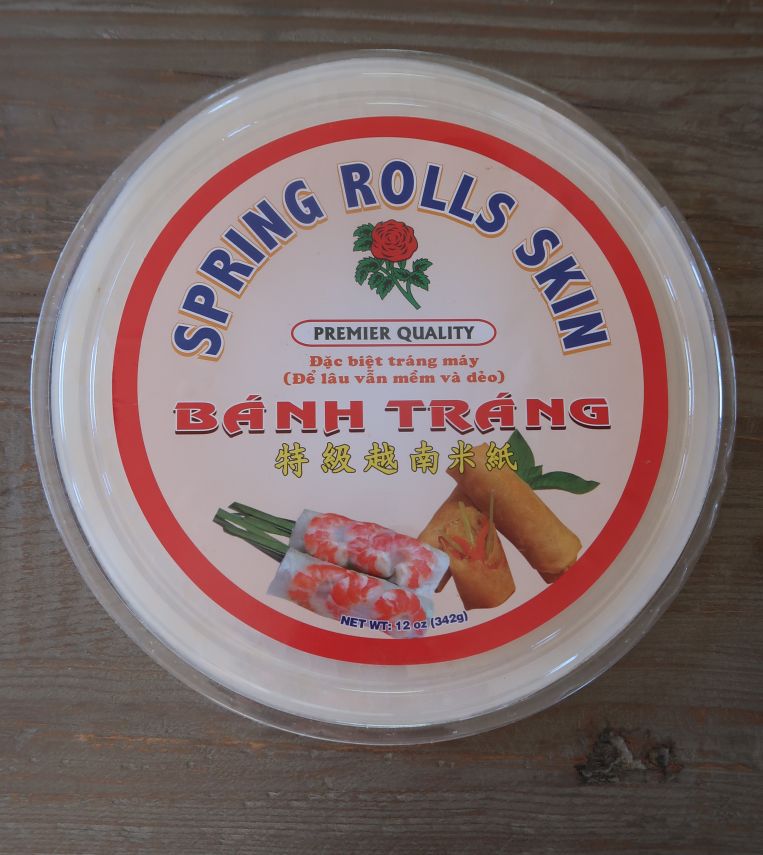
What's up with the rose symbol? Within the Viet-American community, the leading brand of rice paper for decades was "The Rose" brand, which H-Mart online carries. To signal quality, other brands borrow/piggyback on the floral symbol.
If this brand of rice paper is all you've got to choose from, use it! It is fine, though it's thin and requires very quick dip in water. But if your grocery adventures take you into Asian markets, the extra info that follows in this rice paper buying guide will serve you well.
Asian Market Rice Paper
My go-to brand of rice paper is made by Three Ladies, a highly consistent, reputable company that produces and exports Southeast Asian rice and rice products. It contains rice and tapioca and is sturdy yet supple. You'll find this brand at most Chinese and Vietnamese markets, pan-Asian market chains like Ranch 99, as well as online at Amazon and even Cost Plus World Market!
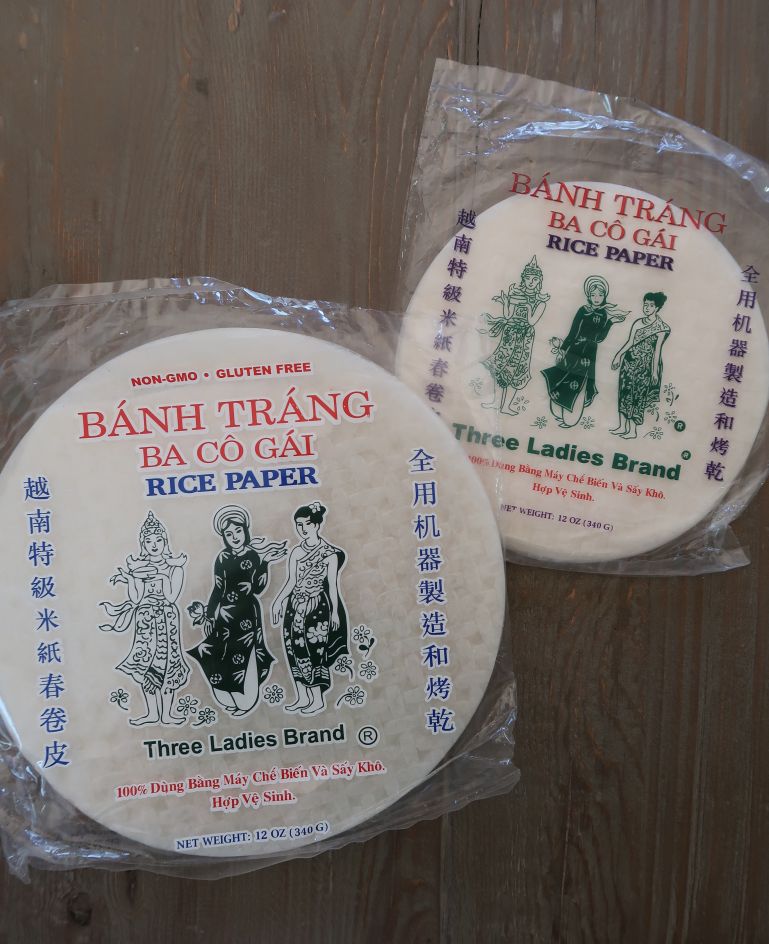
The larger ones shown above are about 8.5 inches (22 centimeters) wide, roughly a medium flour tortilla -- the standard size for recipes. The smaller ones, sold at Asian markets because they're not as popular, are the size of a corn tortilla, in case you want petite rice paper rolls. (The work is about the same if not more because you have to prepare 1.5 or double the quantity to satisfy.)
Brown Rice Paper
Depending on where you shop, you may also see rice paper made from brown rice (gạo lức). The Happy Pho brand below is sold at certain mainstream health food stores. The Three Ladies and Twin Rabbit brands are sold at Asian markets, particularly hardcore Viet markets. If you live in Atlanta, head to the Buford Highway Farmers Market, my favorite international supermarket in America.
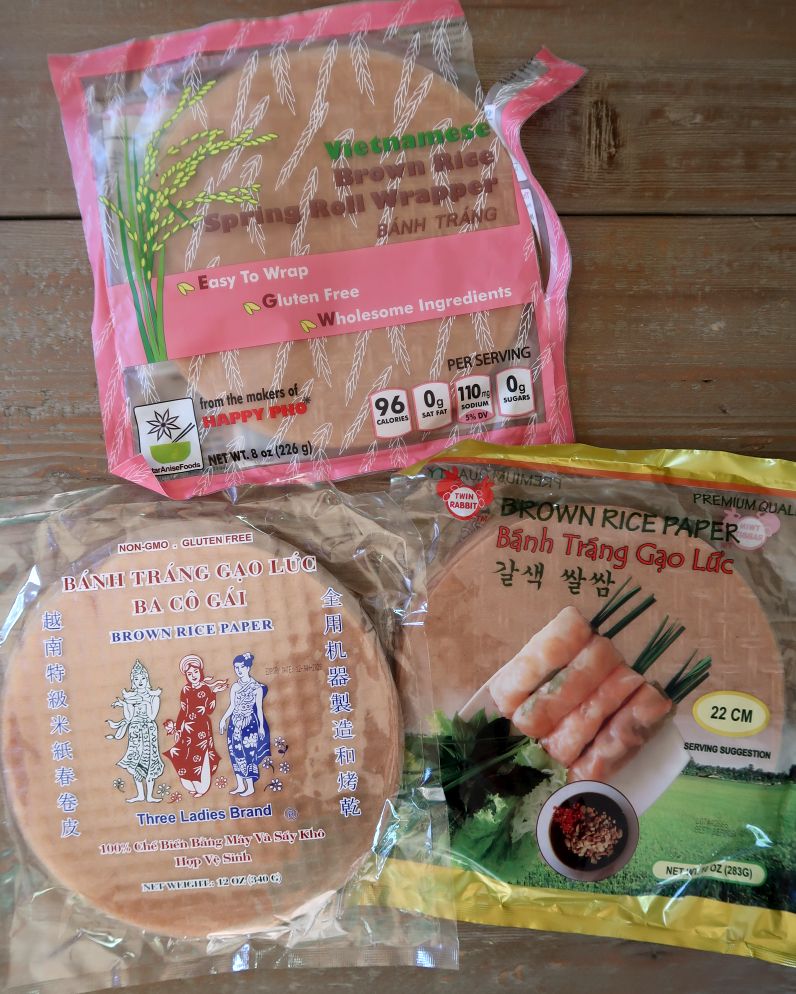
You use the brown rice paper the same way as the regular ones. The color is naturally brownish so your rolls will be rustically handsome, and you'll get a little extra fiber in your diet.
Specialty Rice Paper at Viet Markets
And if you're shopping in a Little Saigon type of enclave, you may come across some interesting options for rice paper. For example, below is a kind of rice paper by Three Ladies made for deep-frying. I've never tried them for Indian samosas but they're decent for Viet chả giò (fried imperial rolls).
There are clear instructions for using the rice paper on the back that involves mildly acidulated water; that is something I've seen in some Viet-language recipes and haven't decided yet whether or not it makes a big difference. My mom has used this rice paper and she says it's alright. She also uses the regular Three Ladies rice paper for the fried rolls. (I wrote up chả giò frying tips here.)
You may also see super thin rice paper. Usually I stay away from ones that look super thin, feel lightweight, and made of all tapioca, water and salt. This one, also made by Three Ladies has promise because it's not too light and blends tapioca and rice.
These are big ones -- roughly 11 inches wide, super burrito-ish in size. Note the instructions on the back to wet only one (1) side of the rice paper to soften it. I'd use a brush or even a damp, non-terry, dish towel to lightly moisten the rice paper.
Rice Paper Tourism
If you're really into rice paper, look for it when you're traveling. For a spell, I was packing net-like bánh tráng rế in my luggage from New York back to California. My mom adores how they fry up to a crisp, even though the wrappers are delicate and fussy. This package is several years old and dried out, but I keep them for reference in my office.
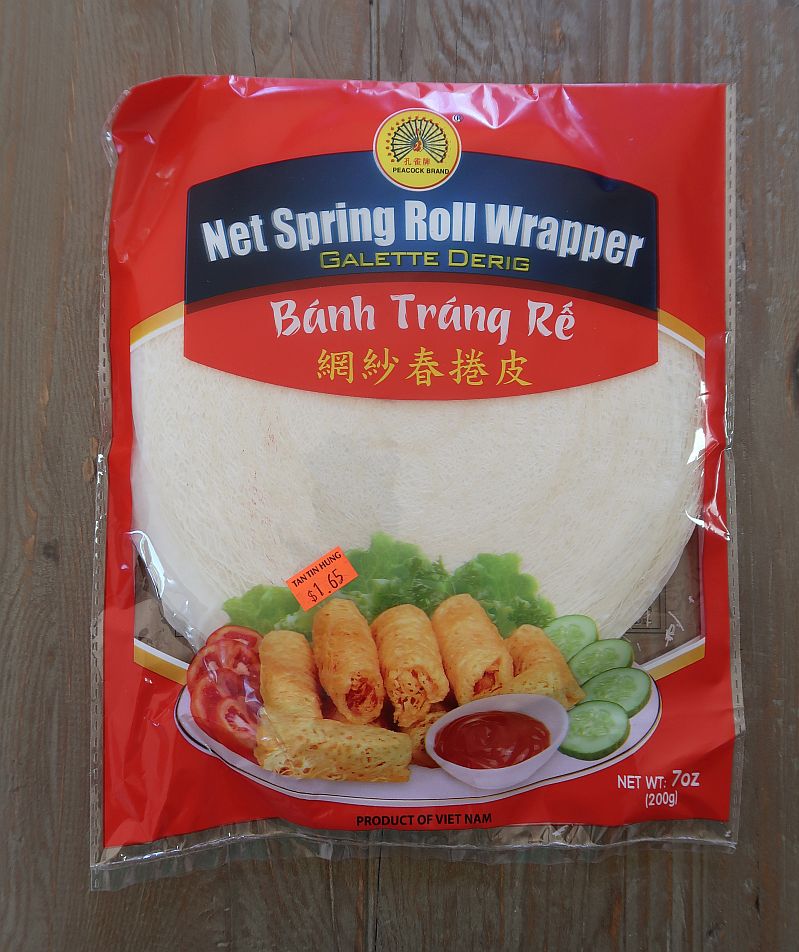
Last I heard, these are no longer distributed on the East Coast. I've not seen them on the West Coast. If you see then, let us all know!
I also look for rice paper in Vietnam. In the photo below, the orange-ish ones on the right bottom have chile, green onion and likely MSG; they're super thin and clear, signaling all or nearly all tapioca. I'm not impressed.
My sister Yenchi brought the rectangular ones back from Vietnam. The top one is tissue thin and from Ha Noi; they are for frying and do not need much water to rehydrate.

The Quang Nam ones are very thick and I've yet to figure out what to do with them. You can have a rice paper adventure when you're traveling in Vietnam!!!
How to Store Rice Paper
The date stamp on the chile-flavored rice papers above signals that yes, you can keep rice paper around for a long time. It's a dried food product, like pasta. Once a package is opened, I keep it in a zip-top bag in my cupboard.
Do you have tips and insights to add to this rice paper buying guide? Do not hold back. Share your knowledge!













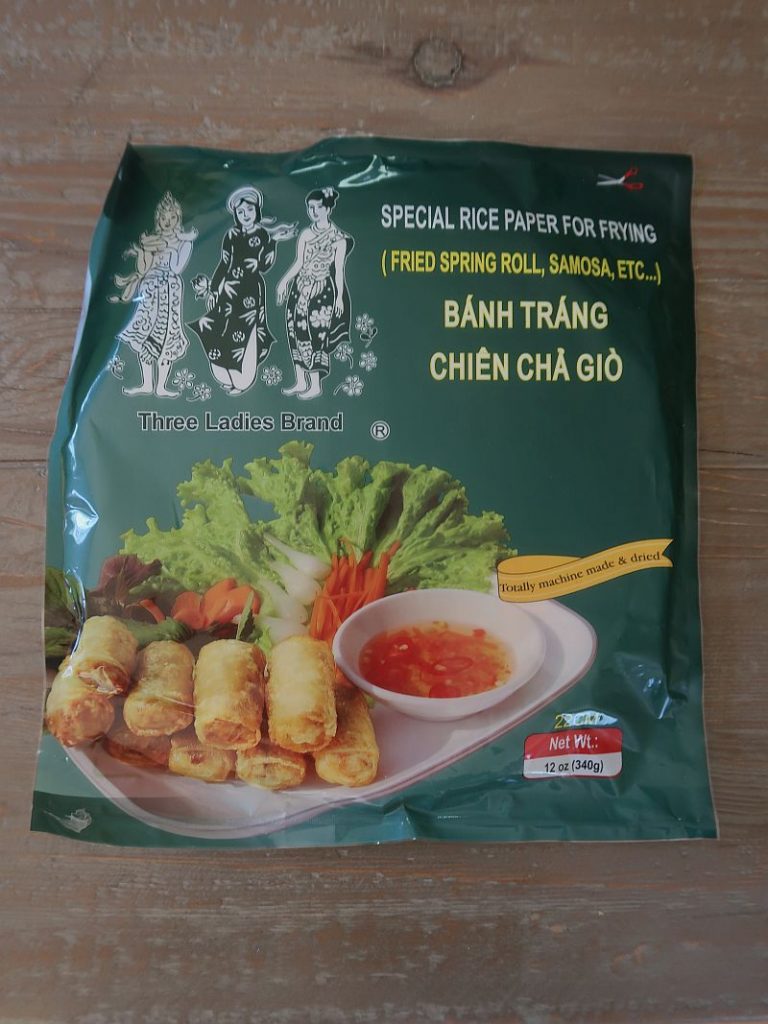
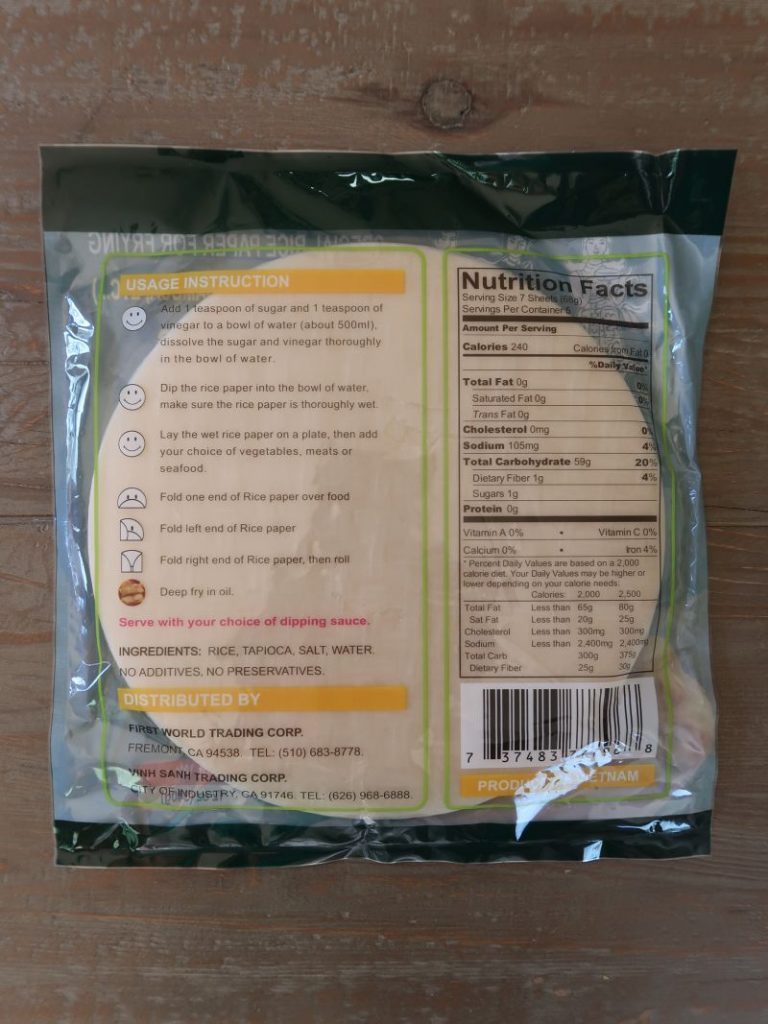
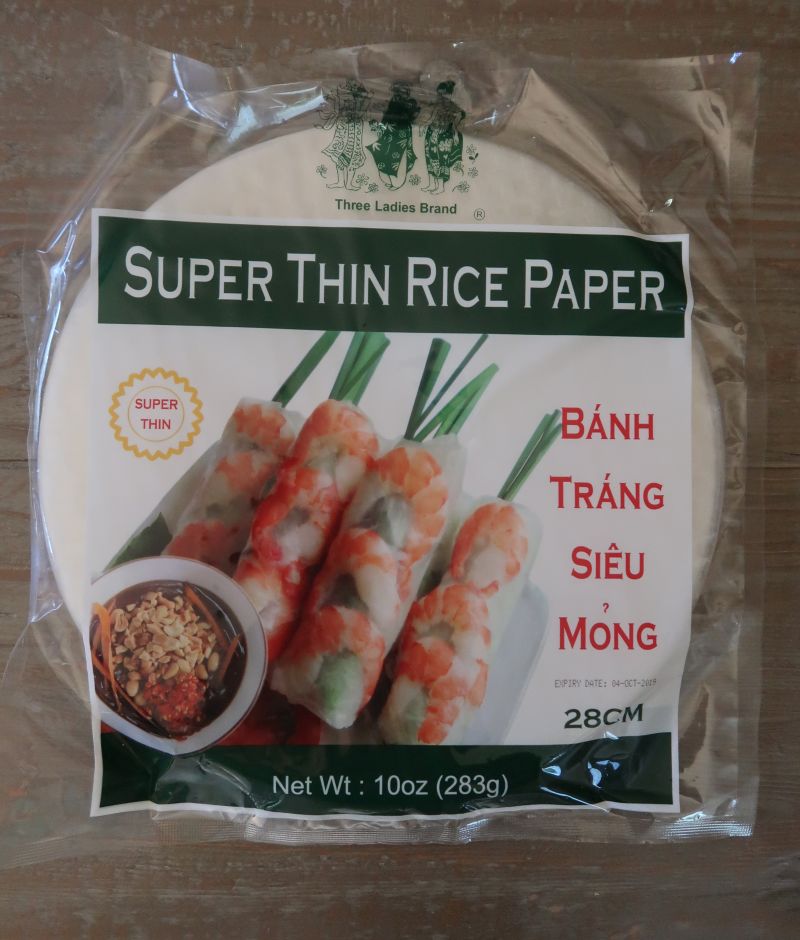
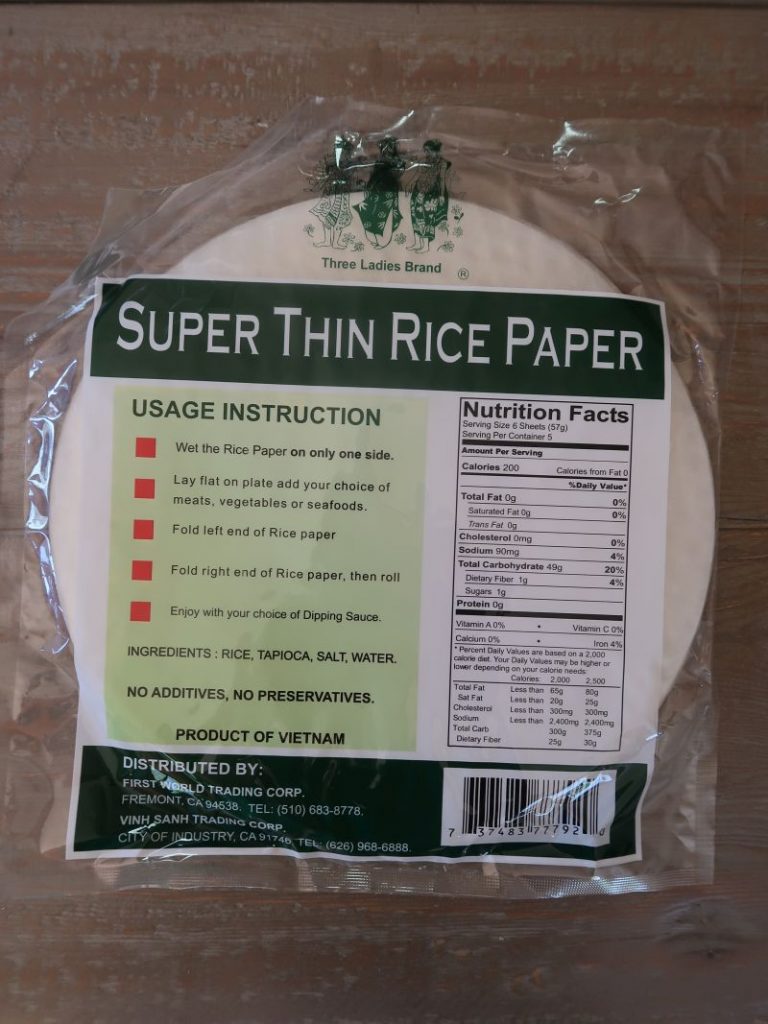


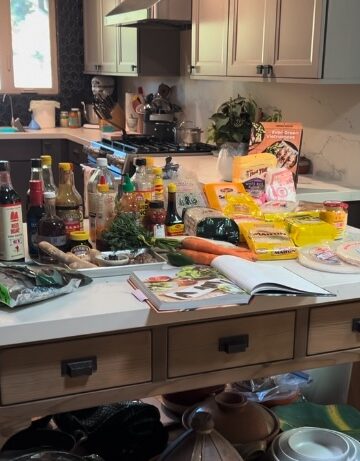
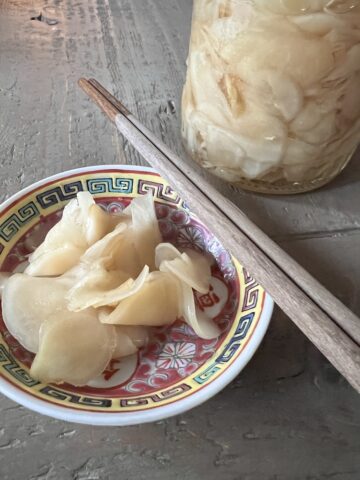
Shirley says
I've seen rice papers with sesame seeds. Is there special usage for them? I've never seen expiration dates on the packages of rice papers (or rice noodles for that matter). How long do they typically keep after purchase?
Tim says
They are a sort of rice cracker. You'd microwave them for about a minute. They can be used for Mi Quang, snacks and other dishes.
Tiffany says
They're fried to make rice crackers and can be eaten with salads and put into soups!
Lajoieduchant says
Quangos nam.....spicy tangy wonton type of dish in a chilli oil sauce of some sort?
Andrea Nguyen says
What is Quangos? I wonder... =D
Lajoieduchant says
Lol, autocorrect strikes again! Quang nam!
Andrea Nguyen says
Ha!
Hong-An says
Bánh tráng rề is back in NYC! Same exact brand and found it at the same supermarket - it’s $1.75 now.
Andrea Nguyen says
HOOOOOORay! Thanks for the intel, Hong-An!
Chris says
Hi. I found Sword Fish brand (with a large rose) and it has a sticker on the back: This product can expose you to chemicals such as Bisphenol A (BPA), Phthalate, lead and other chemicals that are known to the state of California to cause cancer or birth defects or other reproductive harm. Is this a concern, or the usual everything is toxic in California labelling?
Andrea Nguyen says
I think that's a company being overly cautious. The California labeling has been bugging me lately too. It's on all kinds of things. I've not seen Sword Fish brand and if you got it at a reliable/reputable market, then I imagine they chose their products to not harm customers. Hope that's of help but that would be how I'd negotiate the label vagaries.
Kevin S. says
I found this article while trying to figure out why the Sword Fish Brand rice paper our local store recently stocked was so different from our usual — Three Ladies. Sword Fish is MUCH thicker and almost impossible to make as transparent and pliable as Three Ladies. And it had lots more imperfections (holes, grain specks, etc.). On the plus-side, in a weird way I liked that it had more of a flavor to it. Tasted a bit like sourdough in my opinion.
Anyhow, I’ll be sticking with the Three Ladies, as long as I can find it here in the suburban Midwest.
Thanks for putting this together. It was oddly comforting to think I wasn’t crazy about the difference. 🙂
Andrea Nguyen says
Kevin, thanks for your dispatch from the Midwest. Sword Fish brand sounds like the old fashioned kind that required super hot, just boiled water to soften. And we'd still have to wait a bit.
Yep, stick to the Three Ladies. Happy cooking with your rice paper!
Shu ting says
Thanks for sharing. Recently, I bought a brand Bamboo Tree and attempt to make the classic Banh Trang Nuong aka Vietnamese Pizza. However, I realized the rice paper stick to the pan and was unable to provide the crispiness as compared to another brand that I used. I then found out that it contains quite a large amount of tapioca as compared to rice. In this case, would it be more suitable to prepare the rice paper fried or roll it like a summer roll? Please advice.
Andrea Nguyen says
Wet 2 rice papers together then grill it. That's what a chef told me they do at their Viet restaurant in NY.
You can totally use it for fried rolls and un-fried ones too. Hope this helps!
Noel S says
Which brand and type of rice paper sheets would you recommend for drunken noodles?
Andrea Nguyen says
You need wide rice noodles for that Thai dish. Fresh is best but otherwise, try a dried brand like 3 Ladies. They should be as wide as pappardelle. Boil them before using.